University Press of Kentucky has a dual mission—the publication of academic books of high scholarly merit in a variety of fields and the publication of significant books about the history and culture of Kentucky, the Ohio Valley region, the Upper South, and Appalachia. The Press is the statewide nonprofit scholarly publisher for the Commonwealth of Kentucky, serving all Kentucky state-sponsored institutions of higher learning as well as seven private colleges and Kentucky’s two major historical societies.
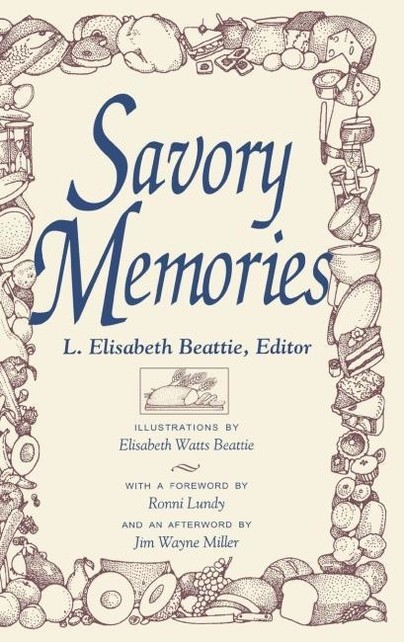
Format: Hardback
Pages: 184
ISBN: 9780813120461
Pub Date: 19 Mar 1998
Illustrations: illus
Description:
Writers love to tell stories, so when L. Elisabeth Beattie remarked that her next book ought to be a Kentucky writers' cookbook, Betty Layman Receveur replied, "Actually, all my sons ever demand of me is my pound cake." Adding a cup of this and a pinch of that, Beattie cooked up Savory Memories, a collection of twenty-two essays about particular dishes that call up warm memories in the writers.
Featuring recipes and memories from writers such as Joy Bale Boone, George Ella Lyon, Ronni Ludy, Ed McClanahan, Sena Jeter Naslund, and Richard Taylor, this is both a cookbook and a compendium of sentiments. This warm and enjoyable blending of essays, illustrations, and recipes is leavened with humor and laden with nostalgia. As much as the food, these writers celebrate the personalities who lovingly prepared and provided their favorite dishes, sustaining life and helping to shape the personas of the authors themselves.A collection of highly personal recollections, Savory Memories is a veritable smorgasbord of delights.

Format: Paperback
Pages: 240
ISBN: 9780813109367
Pub Date: 12 Mar 1998
Illustrations: illus
Description:
"Winner of the North Carolina Society of Historians Award Jane Hicks Gentry lived her entire life in the remote, mountainous northwest corner of North Carolina and was descended from old Appalachian families in which singing and storytelling were part of everyday life. Gentry took this tradition to heart, and her legacy includes ballads, songs, stories, and riddles. Smith provides a full biography of this vibrant woman and the tradition into which she was born, presenting seventy of Gentry's songs and fifteen of the "Jack" tales she learned from her grandfather.
When Englishman Cecil Sharp traveled through the South gathering material for his famous English Folk Songs from the Southern Appalachians, his most generous informant was Jane Hicks Gentry. But despite her importance in Sharp's collection, Gentry has remained only a name on his pages. Now Betty Smith, herself a folksinger, brings to life this remarkable artist and her songs and tales.
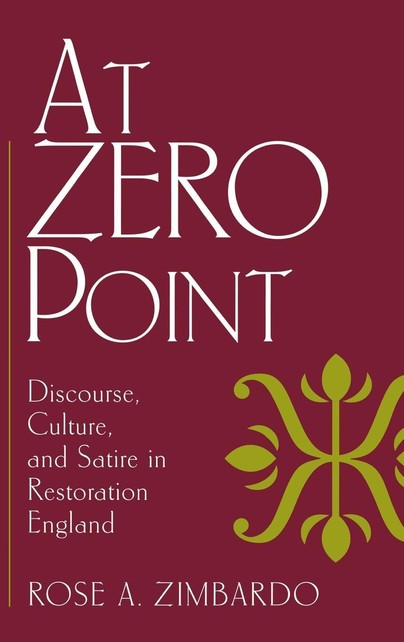
Format: Hardback
Pages: 208
ISBN: 9780813120393
Pub Date: 05 Mar 1998
Description:
At Zero Point presents an entirely new way of looking at Restoration culture, discourse, and satire. The book locates a rupture in English culture and epistemology not at the end of the eighteenth century (when it occurred in France) but at the end of the seventeenth century. Rose Zimbardo's hypothesis is based on Hans Blumenberg's concept of "zero point" -- the moment when an epistemology collapses under the weight of questions it has itself raised and simultaneously a new epistemology begins to construct itself.
Zimbardo demonstrates that the Restoration marked both the collapse of the Renaissance order and the birth of modernism (with its new conceptions of self, nation, gender, language, logic, subjectivity, and reality). Using satire as the site for her investigation, Zimbardo examines works by Rochester, Oldham, Wycherley, and the early Swift for examples of Restoration deconstructive satire that, she argues, measure the collapse of Renaissance epistemology. Constructive satire, as exemplified in works by Dryden, has at its discursive center the "I" from which all order arises to be projected to the external world. No other book treats Restoration culture or satire in this way.
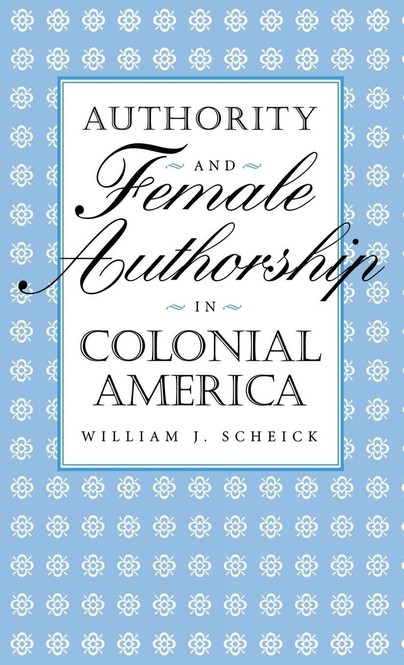
Format: Hardback
Pages: 168
ISBN: 9780813120546
Pub Date: 26 Feb 1998
Description:
Should women concern themselves with reading other than the Bible? Should women attempt to write at all? Did these activities violate the hierarchy of the universe and men's and women's places in it?
Colonial American women relied on the same authorities and traditions as did colonial men, but they encountered special difficulties validating themselves in writing. William Scheick explores logonomic conflict in the works of northeastern colonial women, whose writings often register anxiety not typical of their male contemporaries. This study features the poetry of Mary English and Anne Bradstreet, the letter-journals of Esther Edwards Burr and Sarah Prince, the autobiographical prose of Elizabeth Hanson and Elizabeth Ashbridge, and the political verse of Phyllis Wheatley. These works, along with the writings of other colonial women, provide especially noteworthy instances of bifurcations emanating from American colonial women's conflicted confiscation of male authority. Scheick reveals subtle authorial uneasiness and subtextual tensions caused by the attempt to draw legitimacy from male authorities and traditions.
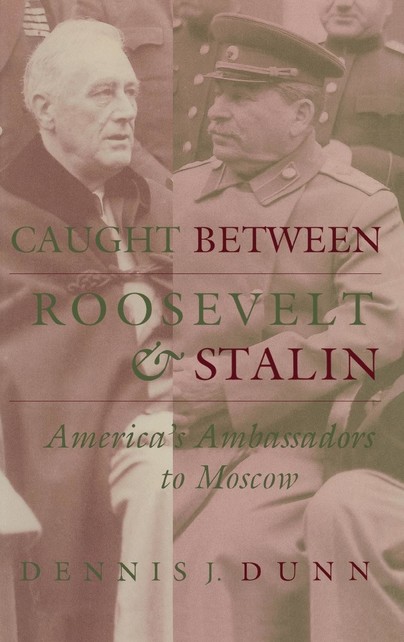
Format: Hardback
Pages: 368
ISBN: 9780813120232
Pub Date: 24 Dec 1997
Illustrations: photos
Description:
On November 16, 1933, Franklin D. Roosevelt and Soviet Commissar of Foreign Affairs Maxim Litvinov signed an agreement establishing diplomatic ties between the United States and the Soviet Union. Two days later Roosevelt named the first of five ambassadors he would place in Moscow between 1933 and 1945.
Caught between Roosevelt and Stalin tells the dramatic and important story of these ambassadors and their often contentious relationships with the two most powerful men in the world.More than fifty years after his death, Roosevelt's foreign policy, especially regarding the Soviet Union, remains a subject of intense debate. Dennis Dunn offers an ambitious new appraisal of the apparent confusion and contradiction in Roosevelt's policy one moment publicizing the four freedoms and the Atlantic Charter and the next moment giving tacit approval to Stalin's control of parts of Eastern Europe and northeast Asia.Dunn argues that "Rooseveltism," the president's belief that the Soviet Union and the United States were both developing into modern social democracies, blinded Roosevelt to the true nature of Stalin's brutal dictatorship despite repeated warnings from his ambassadors in Moscow. Focusing on the ambassadors themselves, William C. Bullitt, Joseph E. Davies, Laurence A. Steinhardt, William C. Standley, and W. Averell Harriman, Dunn details their bruising arguments with Roosevelt over the president's repeated concessions to Stalin.Using information uncovered during extensive research in the Soviet archives, Dunn reveals much about Stalin's policy toward the United States and demonstrates that in ignoring his ambassadors' good advice, Roosevelt appeased the Soviet leader unnecessarily. Sure to generate new discussion concerning the origins of the Cold War, this controversial assessment of Roosevelt's failed Soviet policy will be read for years to come.
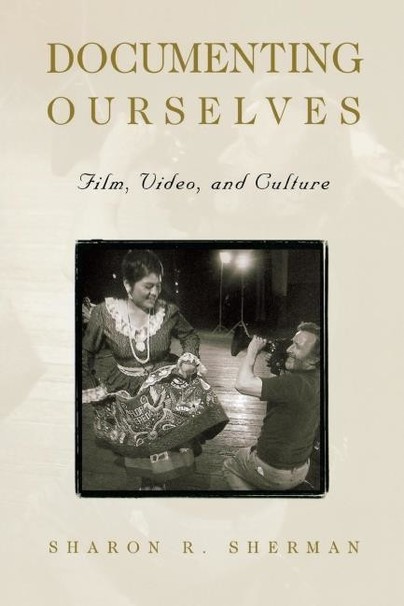
Format: Paperback
Pages: 336
ISBN: 9780813109343
Pub Date: 24 Dec 1997
Illustrations: illus
Description:
Since Robert Flaherty's landmark film Nanook of the North (1922) arguments have raged over whether or not film records of people and traditions can ever be "authentic." And yet never before has a single volume combined documentary, ethnographic, and folkloristic filmmaking to explore this controversy.What happens when we turn the camera on ourselves?
This question has long plagued documentary filmmakers concerned with issues of reflexivity, subject participation, and self-consciousness. Documenting Ourselves includes interviews with filmmakers Les Blank, Pat Ferrero, Jorge Preloran, Bill Ferris, and others, who discuss the ways their own productions and subjects have influenced them. Sharon Sherman examines the history of documentary films and discusses current theiroeis and techniques of folklore and fieldwork.But Sharon Sherman does not limit herself to the problems faced by filmmakers today. She examines the history of documentary films, tracing them from their origins as a means of capturing human motion through the emergence of various film styles. She also discusses current theories and techniques of folklore and fieldwork, concluding that advances in video technology have made the camcorder an essential tool that has the potential to redefine the nature of the documentary itself.
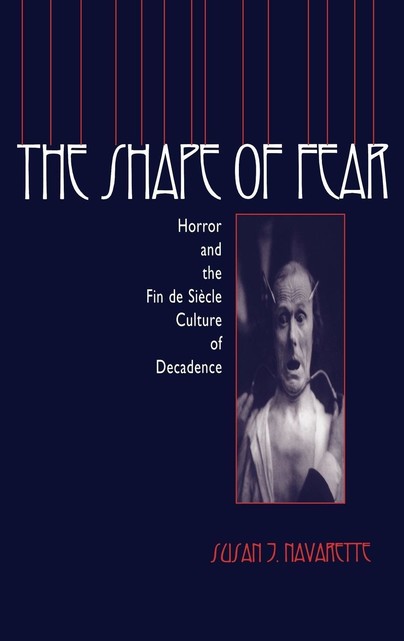
Format: Hardback
Pages: 272
ISBN: 9780813120133
Pub Date: 24 Dec 1997
Illustrations: illus
Description:
During the last decades of the nineteenth century, Charles Darwin, Thomas Henry Huxley, Walter Pater and others changed the nature of thought concerning the human body and the physical environment that had shaped it. In response, the 1890s saw the publication of a series of remarkable literary works that had their genesis in the intense scientific and aesthetic activity of those preceding decades -- texts that emphasized themes of degeneration and were themselves stylistically decompositive, with language both a surrogate for physical deformity and a source of anxiety. Susan J.
Navarette examines the ways in which scientific and cultural concerns of late nineteenth-century England are coded in the horror literature of the period. By contextualizing the structural, stylistic, and thematic systems developed by writers seeking to reenact textually the entropic forces they perceived in the natural world, Navarette reconstructs the late Victorian mentalité. She analyzes aesthetic responses to trends in contemporary science and explores horror writers' use of scientific methodologies to support their perception that a long-awaited period of cultural decline had begun. In her analysis of the classics Turn of the Screw and Heart of Darkness, Navarette shows how James and Conrad made artistic use of earlier "scientific" readings of the body. She also considers works by lesser-known authors Walter de la Mare, Vernon Lee, and Arthur Machen, who produced fin de siècle stories that took the form of "hybrid literary monstrosities." To underscore the fascination with bodily decay and deformation that these writers explored, The Shape of Fear is enhanced with prints and line drawings by Victor Hugo, James Ensor, and other artists of the day. This elegantly written book formulates a new canon of late Victorian fiction that will intrigue scholars of literature and cultural history.

Format: Hardback
Pages: 256
ISBN: 9780813120355
Pub Date: 18 Dec 1997
Illustrations: illus
Description:
Japan is one of the most crowded countries on earth, with three-fourths of its population now living in cities. Tokyo is easily the most populous city on the planet. And yet, though closely packed, its citizens dwell together in relative peace.
In America, inner-city violence -- often attributed in part to overcrowding -- is frequently emphasized as one of the great social problems of the day. What might we learn from Japan's situation that could be applied to our own as we approach the twenty-first century?In this collection an interdisciplinary group of international scholars seek to understand and explain the process and characteristics shaping the modern Japanese city. With frequent comparisons to the American city, they consider such topics as urban landscapes, the quality of life in the suburbs, spatial mixing of social classes in the city, land use planning and control, environmental pollution, and images of the city in Japanese literature.The only book on the subject, The Japanese City surveys the important literature and highlights the current issues in urban studies. The numerous photographs, maps, tables, and graphs, combined with the high quality of the contributions, offer a comprehensive look at the contemporary Japanese city.Contributors: William Burton, David L. Callies, Roman Cybriwsky, Kuniko Fujita, Theodore J. Gilman, Richard Child Hill, P.P. Karan, Robert Kidder, Cotton Mather, and Kohei Okamoto.
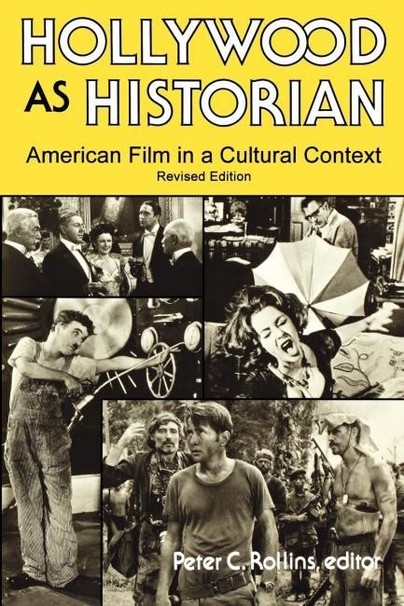
Format: Paperback
Pages: 304
ISBN: 9780813109510
Pub Date: 18 Dec 1997
Description:
Motion picture images have influenced the American mind since the earliest days of film, and many thoughtful people are becoming ever more concerned about that influence, as about the pervasive influence of television. In eras of economic instability and international conflict, the film industry has not hesitated to use motion pictures for definite propaganda purposes. During less troubled times, the American citizen's ability to deal with political and social issues has been enhanced or thwarted by images absorbed in the nation's theatres.
Hollywood As Historian tracks the interaction of Americans with important motion picture productions. Considered are such topics as racial and sexual stereotyping, censorship of films, comedy as a tool for social criticism, the influence of great men and their screen images, and the use of film to interpret history. Opportunities for future study are suggested for those who wish to conduct their own examinations of American film in a cultural context.Hollywood As Historian benefits from a variety of approaches. Literary and historical influences are carefully related to The Birth of a Nation (1915) and Apocalypse Now (1979), two highly tendentious epics of war and cultural change. How political beliefs of filmmakers affected cinematic styles is illuminated in a short survey of documentary films made during the Great Depression. Historical distance has helped analysts to decode messages unintended by filmmakers in the study of The Snake Pit (1948) and Dr. Strangelove (1964). While pluralism of approach has been encouraged, balance has also been a goal: a concern for institutional and thematic considerations never obscures matters of film aesthetics. In twelve chapters dealing with more than sixteen films, Hollywood As Historian offers a versatile text for classes in popular culture, American studies, film history, or film as history. The visual awareness promoted by this text has immediate application, in that students can begin to consider the impact of motion pictures (and television) on their own lives.The films considered: The Birth of a Nation (1915), The Plow that Broke the Plains (1936), The River (1937), March of Time (1935-1953), City Lights (1931), Modern Times (1936), The Great Dictator (1940), The Grapes of Wrath (1940), Native Land (1942), Wilson (1944), The Negro Soldier (1944), The Snake Pit (1948), On the Waterfront (1954), Dr. Strangelove (1964), Who's Afraid of Virginia Woolf? (1966), and Apocalypse Now (1979).
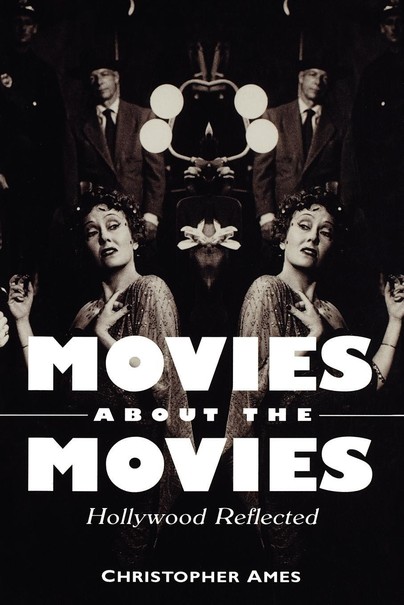
Format: Paperback
Pages: 264
ISBN: 9780813109381
Pub Date: 18 Dec 1997
Illustrations: illus
Description:
Hundreds of Hollywood-on-Hollywood movies can be found throughout the history of American cinema, from the days of silents to the present. They include films from genres as far ranging as musical, film noir, melodrama, comedy, and action-adventure. Such movies seduce us with the promise of revealing the reality behind the camera.
But, as part of the very industry they supposedly critique, they cannot take us behind the scenes in any true sense.Through close analysis of fifteen critically acclaimed films, Christopher Ames reveals how the idea of Hollywood is constructed and constructs itself. Films discussed: What Price Hollywood? (1952), A Star Is Born (1937), Stand-In (1937), Boy Meets Girl (1938), Sullivan's Travels (1941), In a Lonely Place (1950), Sunset Boulevard (1950), The Star (1950), Singin' in the Rain (1952), The Bad and the Beautiful (1952), Pennies from Heaven (1981), The Purple Rose of Cairo (1985), The Player (1992), Last Action Hero (1993).
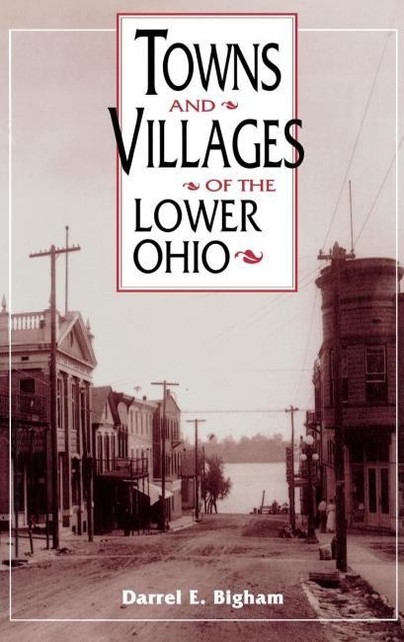
Format: Hardback
Pages: 400
ISBN: 9780813120423
Pub Date: 11 Dec 1997
Series: Ohio River Valley Series
Illustrations: illus
Description:
America. Enterprise. Metropolis.
Cairo. Rome. These are a few of the grandly named villages and towns along the lower Ohio River. The optimism with which early settlers named these towns reveals much about the history of American expansion. Though none became the next great American city, it was not for lack of ambition or entrepreneurial spirit. Why didn't a major city develop on the lower Ohio? What geographic, economic, and cultural factors caused one place to prosper and another to wither? How did Evansville become the largest and most influential city in the region? How did smaller cities such as Owensboro and Paducah succeed?Regardless of how appealing a locale looked on the map, luck, fate, culture, and leadership all helped determine success or failure. The fate of Cairo, Illinois -- on paper an ideal site for a metropolis -- emphasizes the extent to which human decisions, rather than physical landscape, affected a town's prosperity. The location of a canal or railroad terminus, the construction of a factory, or the activities of local boosters all mattered greatly. Darrel Bigham examines these towns and villages from the 1790s, when the first settlements appeared, to the 1920s, when the modern pattern of life associated with automobiles, economic upheaval, and mass culture emerged. Bigham's intimate knowledge of the area offers a true sense of the towns and villages and discloses fundamental truths about the workings of the American dream.
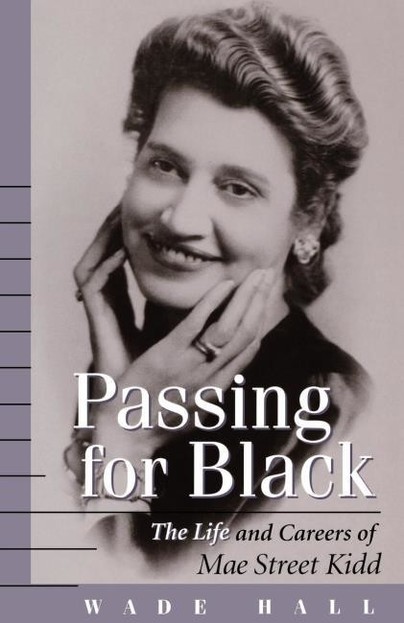
Format: Paperback
Pages: 208
ISBN: 9780813109480
Pub Date: 25 Nov 1997
Illustrations: illus
Description:
In 1976, Kentucky state legislator Mae Street Kidd successfully sponsored a resolution ratifying the 13th, 14th, and 15th amendments to the U.S. Constitution.
It was fitting that a black woman should initiate the state's formal repudiation of slavery; that it was Mrs. Kidd was all the more appropriate. Born in Millersburg, Kentucky, in 1904 to a black mother and a white father, Kidd grew up to be a striking woman with fair skin and light hair. Sometimes accused of trying to pass for white in a segregated society, Kidd felt that she was doing the opposite -- choosing to assert her black identity. Passing for Black is her story, in her own words, of how she lived in this racial limbo and the obstacles it presented. As a Kentucky woman of color during a pioneering period of minority and women's rights, Kidd seized every opportunity to get ahead. She attended a black boarding academy after high school and went on to become a successful businesswoman in the insurance and cosmetic industries in a time when few women, black or white, were able to compete in a male-dominated society. She also served with the American Red Cross in England during World War II. It was not until she was in her sixties that she turned to politics, sitting for seventeen years in the Kentucky General Assembly -- one of the few black women ever to do so -- where she crusaded vigorously for housing rights. Her story -- presented as oral history elicited and edited by Wade Hall -- provides an important benchmark in African American and women's studies and endures as a vital document in Kentucky history.
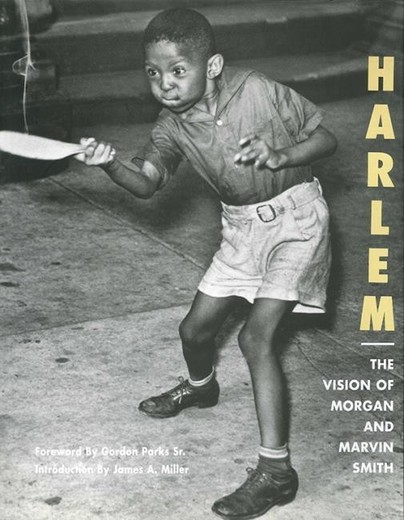
Format: Hardback
Pages: 184
ISBN: 9780813120294
Pub Date: 13 Nov 1997
Illustrations: photos
Description:
In 1933, Morgan and Marvin Smith, twin sons of sharecroppers from Kentucky, arrived in Harlem. Despite the hardships of the Great Depression, they found a flourishing arts community and quickly established their place as visual chroniclers of the life of the city. For thirty years, the Smiths used their cameras to record the achievements of blacks in the face of poverty and discrimination.
Rejecting the focus on misery and hopelessness common to Harlem photographers of the time, they documented important "firsts" for the city's blacks (the first black policeman, the first black women juror), the significant social movements of their day (anti-lynching protests, rent strikes, and early civil rights rallies), as well as the everyday life of Harlem, from churchgoers dressed for Easter to children playing in the street. The Smiths' photography and art studio was next to the famed Apollo Theatre, and it became a required stop for anyone making a pilgrimage to the community. There and elsewhere the Smiths photographed actors, musicians, dancers, artists, athletes, politicians, businessmen, and educators. They captured Maya Angelou early in her career as a Primus dancer, W.E.B. DuBois recording a speech in their sound studio, Joe Louis at his training camp, Jackie Robinson teaching his young son to hold a baseball bat, Nat King Cole dancing at his wedding, Billie Holiday singing for friends, Josephine Baker distributing candy to children, and many other prominent figures at significant and ordinary moments of their lives. Drawn from the collection of the Schomberg Center for Research in Black Culture and the Smith family archives, Harlem reproduces nearly 150 photographs by these important artists and chroniclers, bringing to life a vital community of great cultural, political, and economic achievement. Morgan Smith died in 1993. Marvin Smith died in 2003.
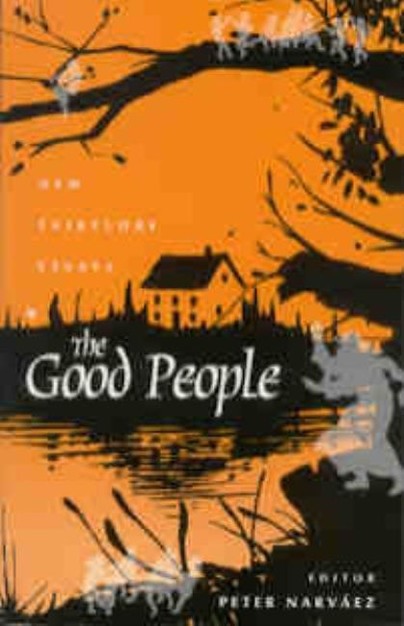
Format: Paperback
Pages: 546
ISBN: 9780813109398
Pub Date: 06 Nov 1997
Illustrations: 33
Description:
Whether called "the good people," "the little people," or simply "them," fairies are familiar from their appearances in Shakespeare's plays, Disney's films, and points in between. In many cultures, however, fairies are not just the stuff of distant legend or literature: they are real creatures with supernatural powers. The Good People presents nineteen essays that focus on the actual fairies of folklore -- fairies of past and living traditions who affected, and still affect, people's lives in myriad ways.
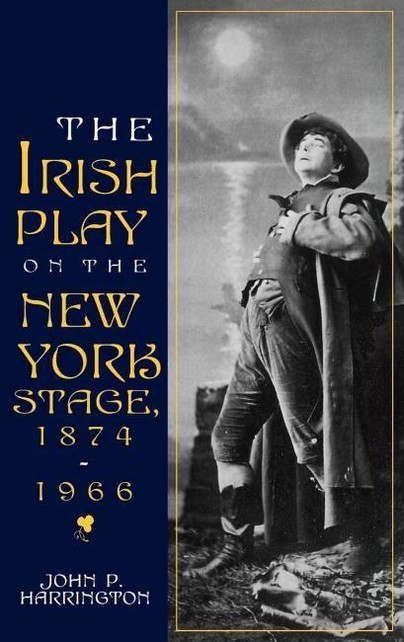
Format: Hardback
Pages: 176
ISBN: 9780813120331
Pub Date: 06 Nov 1997
Series: Irish Literature, History, and Culture
Illustrations: illus
Description:
Over the years American -- especially New York -- audiences have evolved a consistent set of expectations for the "Irish play." Traditionally the term implied a specific subject matter, invariably rural and Catholic, and embodied a reductive notion of Irish drama and society. This view continues to influence the types of Irish drama produced in the United States today.
By examining seven different opening nights in New York theaters over the course of the last century, John Harrington considers the reception of Irish drama on the American stage and explores the complex interplay between drama and audience expectations. All of these productions provoked some form of public disagreement when they were first staged in New York, ranging from the confrontation between Shaw and the Society for the Suppression of Vice to the intellectual outcry provoked by billing Waiting for Godot as "the laugh sensation of two continents." The inaugural volume in the series Irish Literature, History, and Culture, The Irish Play on the New York Stage explores the New York premieres of The Shaughraun (1874), Mrs. Warren's Profession (1905), The Playboy of the Western World (1911), Exiles (1925), Within the Gates (1934), Waiting for Godot (1956), and Philadelphia, Here I Come! (1966).
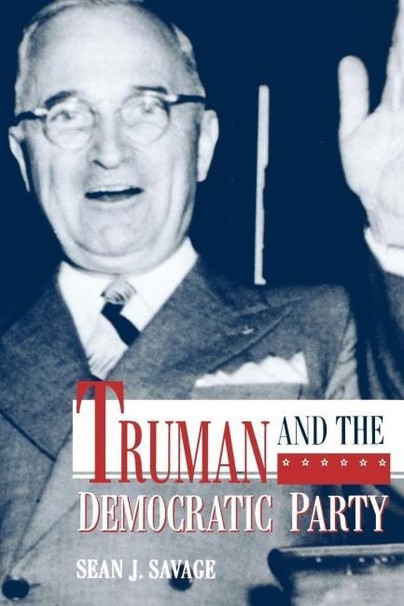
Format: Paperback
Pages: 320
ISBN: 9780813109411
Pub Date: 30 Oct 1997
Illustrations: 16 b&w photos, 2 tables
Description:
What best defines a Democrat in the American political arena -- idealistic reformer or pragmatic politician? Harry Truman adopted both roles and in so doing defined the nature of his presidency.Truman and the Democratic Party is the first book to deal exclusively with the president's relationship with the Democratic party and his status as party leader.
Sean J. Savage addresses Truman's twin roles of party regular and liberal reformer, examining the tension that arose from this duality and the consequences of that tension for Truman's political career.Truman saw the Democratic party change during his lifetime from a rural-dominated minority party often lacking a unifying agenda to an urban-dominated majority party with strong liberal policy objectives. A seasoned politician who valued party loyalty and recognized the value of political patronage, Truman was also attracted to a liberal ideology that threatened party unity by alienating southern Democrats. By the time he succeeded Franklin Roosevelt, the diversity of opinions and demands among party members led Truman to alternate between two personas: the reformer committed to liberal policy goal -- civil rights, national health insurance, federal aid to education -- and the party regular who sought greater harmony among fellow Democrats.Drawing on personal interview with former Truman administration members and party officials and on archival materials -- most notably papers of the Democratic National Committee at the Harry S. Truman Library -- Savage has produced a fresh perspective that is both shrewd and insightful. This book offers historians and political scientists a new way of looking at the Truman administration and its impact on key public policies.

















